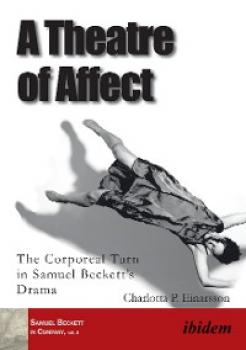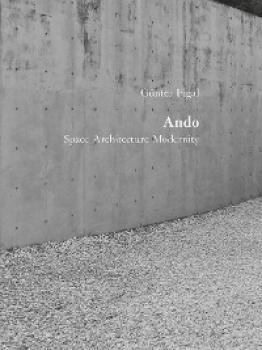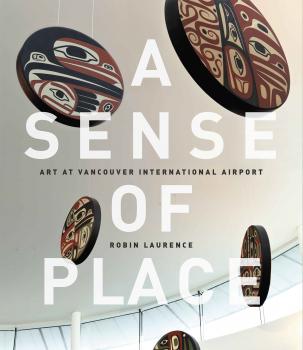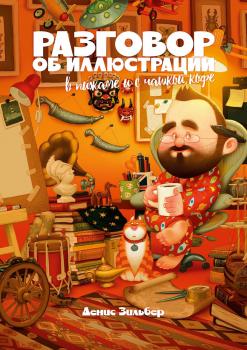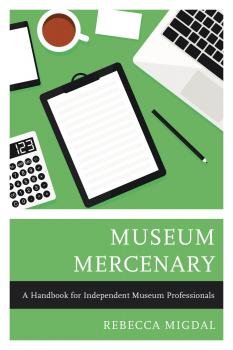ТОП просматриваемых книг сайта:
Изобразительное искусство, фотография
Различные книги в жанре Изобразительное искусство, фотография, доступные для чтения и скачиванияАннотация
There is a hidden artist within each of us. We all have a natural yearning to express ourselves. As children, this self-expression is a joyful natural process, manifested through drawing and movement without ever thinking about what other people may say. Yet as we grow older we often become more inhibited, frustrated and reserved. The FLY process is one of letting go, relinquishing control and permitting the unplanned and unexpected to take the lead. In this way, we take the first step on the path towards reconnecting to the curious creative child we once were, thus rediscovering our creative inner spirit. FLY stands for Free the Life within You. Developing this concept has turned my life into an inspiring, unexpected colorful journey, depicted in the artwork from the 3 painting series shown in this book. Deep Space – inspired by the Hubble telescope images Human Formation – based on Lennart Nilsson's inner body photography Cycles of Life – influenced by the everlasting journey of the human spirit I am thrilled to share my personal quest with you. Be my guest and FLY with me Have magic in your life Ted Barr
Аннотация
Šárka Sladovníková analyzes the depiction of the Holocaust in Czechoslovak and Czech Feature Films and the relevant literary pretexts. While she charts the social and cultural framework in which the films were made and how this framework changed, she also focuses on the cinematic language, the composition of and narration in each film (e.g., the depiction of the war and the Shoah as a narratively closed versus a narratively open event), genre aspects of the films (e.g., the use of comedy and humor), convention and innovation in presenting motifs and characters (the division of gender roles, the character of the “good German”). Particular attention is paid to the portrayal of stereotypes and countertypes in the films, where already well-known images, situations, and backdrops are repeated and which meet viewers’ expectations or, in contrast, which form countertypes and countersituations that go against the grain. Many of the films analyzed are adaptations of literary works. Therefore, this book is also a contribution to the rapidly developing field of adaptation studies.
Аннотация
When Samuel Beckett’s work first appeared, it was routinely described, by Adorno amongst others, as a clear example of European high culture. However, this judgement ignored an aspect of Beckett’s work and its reception that is, arguably, not yet fully understood; the intimate relation between his work and popular culture. Beckett used popular cultural forms; but popular culture has also found a place both for the work and for the man. This collection of essays examines how popular cultural forms and media are woven into the fabric of Beckett’s works, and how Beckett continues to have far-reaching impact on popular culture today in a host of different forms, in film and on television, from comics to meme culture, tourism to marketing.
Аннотация
Combining phenomenological analysis and affect theory, this book takes stock of the various ways in which the body in Samuel Beckett’s drama participates in the affective ecology of performance. If the post-human innovation up until the present has worked to decentre the ‘human’, by rendering notions of thinking, experience, and affect impersonal and by developing new models of expression and communication, then this innovation seems to be already underway in Beckett’s theatre of affect where the assault against language is made possible through the thematising of the body as a mode of encountering presence. The corporeal turn in Beckett’s drama therefore has far-reaching implications for the production of meaning in his work.
Информация о книге
Автор произведения Charlotta Palmstierna Einarsson
Аннотация
This groundbreaking collection from scholars and artists on the legacy of Beckett in contemporary art provides readers with a unique view of this important writer for page, stage, and screen. The volume argues that Beckett is more than an influence on contemporary art—he is, in fact, a contemporary artist, working alongside artists across disciplines in the 1960s, 1970s, and beyond. The volume explores Beckett’s formal experiments in drama, prose, and other media as contemporary, parallel revisions of modernism’s theoretical presuppositions congruent with trends like Minimalism and Conceptual Art.
Containing interviews with and pieces by working artists, alongside contributions of scholars of literature and the visual arts, this collection offers an essential reassessment of Beckett’s work. Perceiving Beckett’s ongoing importance from the perspective of contemporary art practices, dominated by installation and conceptual strategies, it offers a completely new frame through which to read perennial Beckettian themes of impotence, failure, and penury. From Beckett’s remains, as it were, contemporary artists find endless inspiration.
Containing interviews with and pieces by working artists, alongside contributions of scholars of literature and the visual arts, this collection offers an essential reassessment of Beckett’s work. Perceiving Beckett’s ongoing importance from the perspective of contemporary art practices, dominated by installation and conceptual strategies, it offers a completely new frame through which to read perennial Beckettian themes of impotence, failure, and penury. From Beckett’s remains, as it were, contemporary artists find endless inspiration.
Аннотация
In 1984 Czech writer Milan Kundera published his essay 'The Tragedy of Central Europe' in The New York Review of Books, which established the framework for disputes about the space ‘between East and West’ for the following 30 years. Even today, the echo of those debates is still audible in spatial narratives. Discussing the way in which literary figures are positioned within new hierarchies such as gender, class, or ethnicity, this volume shows how the space of the imagined Central Europe has been de- and reconstructed. Special attention is paid to the role of the past in shaping contemporary spatial discourse.
Аннотация
The fact that discussions of architecture are largely unchartered territory in philosophy leads the phenomenological and hermeneutical philosopher Günter Figal onto its unexplored paths. After previously surveying the work of Frank Lloyd Wright and Peter Zumthor, Figal turns his attention to Tadao Ando’s buildings in this book. Figal’s philosophical considerations include refl ections on space, modernity, but also—in light of the fact that many of Ando’s buildings are museums or house works of art—on art. Figal explores Ando’s buildings—simple and reduced in their sparing use of only a few materials—as manifestations of the architect’s sense for what is possible. Ando’s buildings determine and change their locations; through their passageways, staircases, and transitional areas, they infl uence how visitors behave in them, and also communicate a sense of tradition without being traditional. Figal’s book steps away from the beaten track of architectural discourse.
Аннотация
A spectacular overview of one of the most highly acclaimed art collections on the West Coast, which greets travelers at Vancouver International Airport (YVR) as they journey between land, sea, and sky. The airport which is known for its modern design and expansive topography, offers an impressive visual display of award-winning art and architecture. Each terminal building represents the culture heritage, natural beauty, and iconic experiences that embody British Columbia, and the artwork exhibited throughout plays an integral role in telling those stories. Revered in particular for its focus on Pacific Coast Native art, the collection is presented in the thematic groupings of land, sea, and sky—three realms that intersect at YVR.In A Sense of Place, art historian and critic Robin Laurence will examine the commissioning of dozens of striking artworks as a response to the airport’s overall architectural and design plan, and particularly as a reflection of the cultural heritage and natural environment identified with the province of British Columbia. Among the highlights of the collection are monumental sculptures by leading Northwest Coast First Nations artists including Susan A. Point (Coast Salish), Robert Davidson (Haida), Dempsey Bob (Tahltan-Tlingit), Richard Hunt (Kwakwaka’wakw), Lyle Wilson (Haisla), Joe David (Nuu-chah-nulth), Connie Watts (Nuu-chah-nulth, Kwakwaka’wakw and Gitxsan), and the late Bill Reid, famed for The Spirit of Haida Gwaii: The Jade Canoe. Their art both welcomes and bids farewell to the millions of travellers who make their way through YVR each year.
Аннотация
Что такое иллюстрация? Чем отличается хорошая иллюстрация от плохой? Насколько важен для иллюстратора сторителлинг и как развить собственный стиль? За что Харун ар-Рашид отрубил голову Джафару и почему Джеймс Бонд не носит розовый камзол? Должны ли мы быть благодарны Адаму и смеялся ли царь Соломон? Какова связь между палитрой старых мастеров и термоядерным синтезом? Почему профессия иллюстратора – лучшая профессия на свете? На все эти и на многие другие вопросы и ответит вам эта книга.
Аннотация
Do you love museums? Do you believe in their wonder and power? Do you want to contribute to a wider museum community? Do you want to build a satisfying independent career? Museum Mercenary is for you. This book is for anyone who believes in museum work but struggles to find satisfaction in traditional museum jobs. It is for those who want to be challenged and inspired by a wider network of colleagues. It is for the creative, committed, and curious who want to live fulfilling lives while building meaningful careers. It is for those just hitting the job market, for those looking for a mid-career shift, or those wanting to contribute after retirement. It is for those who hope to balance making money with making a difference. Museum Mercenary shares how a dedicated museum worker can launch and sustain a successful and satisfying career as an independent museum professional. This book is a toolkit for anyone looking to build a career consulting for museums. It provides practical advice about establishing your business, building your network, and managing projects to ensure long-term success and satisfaction. This book will help you answer key questions, such as: How do you market your services and find clients? Which skills should you develop and how? How do you manage taxes and insurance? What professional standards should you follow? How do you plan for the future? And, most importantly, how do you do all of that while doing museum work that makes you proud? Museum Mercenary bridges the gap between guides for doing great museum work and guides for building a successful freelance career. It prepares you to become freelance professional engaged in transforming the museum field. Use the tips, tactics, and activities in this book to navigate freelancing and then get back to the business of meaningful museum work.




